|
Displaying items by tag: Picasso
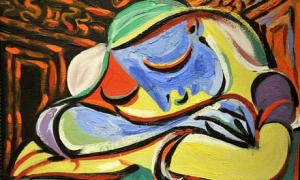
Millions of pounds raised by the sale of a little-known Picasso masterpiece are to fund medical research into obesity, diabetes and heart disease.
The portrait of the artist's lover, Marie-Therese Walter, fetched £13.5m when it went under the hammer on Tuesday at Christie's Impressionist and Modern Art auction in London.
The 1935 work, "Jeune fille endormie", was given to the University of Sydney last year by an anonymous US donor on the condition that it be sold to support scientific research at the university.
"When they gave us this remarkable work our donor said "this painting is going to change the lives of many people"," said Michael Spence, the university's vice-chancellor.
"They were right. We are grateful for their extraordinary generosity and delighted with the outcome of the auction," he added.
The rarely-seen piece was estimated to raise between £9 million and £12 million but sold to an anonymous British buyer for £13,481,250.
Giovanna Bertazzoni, director of Impressionist and Modern Art at Christie's, said it was "an absolute jewel of a painting by one of the great artistic geniuses of Western art", adding that the work was "bursting with colour and luring the viewer into the intimate sanctity of Picasso's love for Marie-Therese."
"We are thrilled to have realised a strong price for Sydney University's Picasso, especially knowing that the proceeds will benefit such a worthy cause," Bertazzoni said.
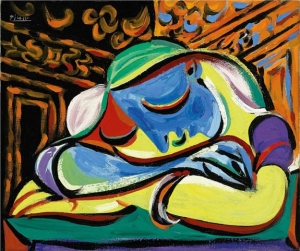
Pablo Picasso’s portraits of three different lovers raised 42.2 million pounds ($68.5 million) last night in London as collectors of the Spanish artist battled for paintings and led demand for 20th-century artworks.
Christie’s International’s three-hour auction of modern and Impressionist art totaled 140 million pounds, including 40 lots from the estate of the Swiss art dealer Ernst Beyeler, who died last year. The Basel-based gallerist’s material contributed 44.7 million pounds with only one piece failing to sell -- a Claude Monet water-lily painting.
“The market is strong,” the New York-based dealer Tony Shafrazi said. “The media is panicking about the economy, and yet there’s a lot of hidden money out there.”
Picasso is the world’s most heavily traded modern artist at auction. Wealthy investment-conscious collectors looking for a hedge against recession are attached to his trophy works, particularly when they depict his lovers. The 1932 painting of Marie-Therese Walter, “Nude, Green Leaves and Bust” fetched $106.5 million -- the most for any artwork at auction -- at Christie’s, New York, in May 2010.
A 1939 painting of Dora Maar, “Femme assise, robe bleue,” showing Picasso’s lover on a chair sporting a purple hat, sold yesterday for 18 million pounds, against an estimate of 4 million pounds to 8 million pounds. It had been acquired by the seller’s family from Beyeler in about 1968.
The new buyer was the Swiss-based Greek collector Dimitri Mavrommatis, bidding by telephone to Thomas Seydoux, Christie’s international head of Impressionist and modern art, the auction house said after the sale.
Marie, Dora
Two lots earlier, the London-based dealer Alan Hobart of the Pyms Gallery paid 13.5 million pounds for Picasso’s 1935 painting “Jeune fille endormie,” showing the artist’s mistress Walter snoozing on her folded arms.
Valued at 9 million pounds to 12 million pounds, the canvas was sold by an anonymous owner who is donating proceeds to the University of Sydney to fund medical research.
“The Maar was the best of tonight’s Picassos,” said Guy Jennings, partner in London-based dealers Theobald Jennings. “The market is sane and solid, and slightly stronger than it was in May in New York.” Jennings was one of several dealers who noticed Asian clients bidding on “entry level” works by modern masters. A Picasso print priced at 67,250 pounds was one of 4 percent of the lots that went to Asian buyers. European bidders bought 54 percent of the works, with the remaining 42 percent falling to the U.S., said Christie’s.
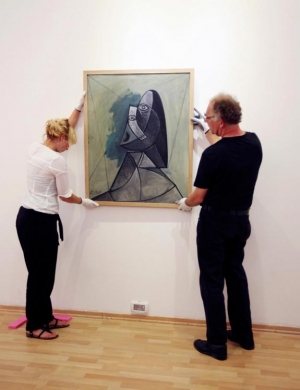
A Palestinian art academy on Monday put on display a $7 million Pablo Picasso masterpiece, the first of its kind in the West Bank.
Picasso's 1943 "Buste de Femme" is on loan from the Van Abbemuseum in Eindhoven, Holland. Organizers said they had to overcome a lack of reliable transport and several Israeli checkpoints along the way.
The art director of the Palestinian academy, Khalid Horani, said it took two years to arrange the loan. He said the painting's journey was "a story full of details and difficulties."
The small art school in Ramallah put in the loan request in early 2010. Normally, such inter-museum exchanges are routine and take about six months to coordinate.
"Nothing is normal over here," Horani said. "We planned to have an art work here, but found ourselves going through all the political complications."
Horani said the painting was flown from Amsterdam to Tel Aviv and was then escorted to Ramallah by an Israeli security company before going on display. He said the uprisings in the Arab world also postponed the artwork's delivery.
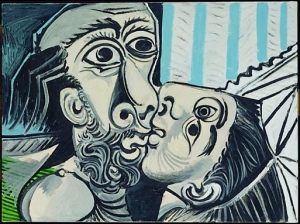
Expectations have run high - yet not nearly high enough, as it turns out - since the de Young Museum first announced "Picasso: Masterpieces From the Musée National Picasso, Paris," which opens today.
Not since the Fine Arts Museums of San Francisco presented "Picasso and the War Years, 1937-1945" in 1998, to which many lenders contributed, has the Bay Area seen the work of modernism's defining innovator in similar depth.
Any given room of this current exhibition would count as a noteworthy event, especially those devoted to Picasso's concoction of Cubism and his manhandling of Surrealism. And the show as a whole will hit lovers of modern art like an overdose of a euphoric that also induces deep reflection.
'Steins' adds context
"Picasso" gains added depth - which it hardly needs - from the concurrent run (through Sept. 6) of "The Steins Collect: Matisse, Picasso and the Parisian Avant-Garde" at the San Francisco Museum of Modern Art. "The Steins Collect" contains key pictures that lend context to pivotal works in "Picasso," though the latter show's chronology runs decades longer. For example, several early multi-figure compositions in "Picasso" respond directly to paintings by Paul Cézanne, such as the "Bathers" (1898-1900) in "The Steins Collect."
Not everything in the de Young exhibition ranks as a "masterpiece." Even Picasso had creative limits. A room centered on his responses to war, excepting a few pieces from "the 'Guernica' galaxy," as Musée Picasso Director Anne Baldassari calls it, leaves him looking wrong-footed in spite of his confidence. Picasso refracted his reckonings with history through art history, but his propagandistic updating of Goya, "Massacre in Korea" (1951), still rates only a cringe.
But the de Young exhibition leaves no doubt of Pablo Picasso's prodigious mastery of painting, drawing, printmaking and sculpture both carved and constructed - an idiom he invented. "Picasso" makes his long life and colossal productivity seem necessary: large dimensions barely adequate to the span of his abilities.
"Picasso" draws from more than 70 years of work belonging to the Paris institution founded to serve as custodian of the legacy given to the French nation in lieu of estate taxes by Picasso and his heirs.
The exhibition advances at different paces on several tracks: formal invention, the emulation and supersession of predecessors and autobiography, with wives and known mistresses as provocateurs.
Baldassari quotes a Picasso remark related by one of those women, Françoise Gilot, that could serve as epigraph to the exhibition as a whole: "I've reached a moment ... when the movement of my thought interests me more than the thought itself."
From the outset, "Picasso" invites us to witness a mute process of thinking about skill, materials, the magical transactions of picturing and the personal and cultural force of artworks.
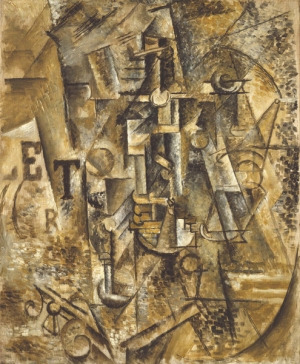
Analytic cubism -- the name couldn't be worse. It sounds like an advanced placement course in geometry, not a descriptor for the dramatic stylistic shift that moved art from impressionism to abstraction, albeit with a loud grinding of the gears.
This early conceptual attempt at rendering the fourth dimension was a head-scratcher when it first appeared, and it is still cause for much explanatory heavy lifting. The cubist paintings made between 1910 and 1912 by Pablo Picasso and Georges Braque are considered the apogee of cubism, and that makes them the standard-bearers of this art moment that is underappreciated by most, and over-scrutinized by a few.
The work was reviled 100 years ago; time has proved it to be pivotal but hasn't helped its popularity. The Kimbell Art Museum has stepped into the breach with "Picasso and Braque: The Cubist Experiment, 1910-1912," which opens Sunday. The Kimbell owns two of the best works in the exhibit, and its conservation staff provided a gallery of supporting materials that show the various painting techniques the artists used to achieve their surface textures.
Between the 16 paintings, 20 etchings, a gallery of painting techniques employed by Braque and Picasso, a reading room and a special app for iPads called iCubist -- available to exhibition visitors free on 40 preloaded iPads -- there is a great deal of translation help with this exhibit. Although there may never be a "simply put" explanation for cubism, all this helps tremendously.
The tightly focused show, organized by the Kimbell and the Santa Barbara Museum of Art, is a revelation. Too often these paintings are relegated to a quick art history hit because their dark colors and extreme textural effects muddy and flatten when they are reproduced, and the works on paper are almost never exhibited. Seeing the prints for the first time, and many of the paintings, is truly edifying.
Picasso and Braque's intense two-year collaboration produced paintings that are often so similar that it is difficult to ascertain which artist painted which canvas. They avoided putting their signatures on the front, so they didn't assist in attribution. They used almost identical palettes of subdued earthy darks and golds, the better to separate themselves from the tutti-fruitti colors of the impressionists and color saturation of the fauves. The browns and blacks in the paintings are similar to conté crayons used in drawings, to further suggest these are exploratory works.
The artists looked at their subject matter from above and from eye level, combining the viewpoints to create an approximation of a greater whole, in theory anyway. They used hard lines to define space, but the lines also fractured the plane of the canvas into prismatic sections. The sections would then bleed into adjoining ones through a blending of colors called passage.
The artists added hatch marks, incised lines in the wet pigment, mixed sand and metal filings into the paint, used stenciled letters and pasted on pre-printed papers for some of the first collage effects. Braque is given credit as the first to try many of these; Picasso would then push the limits of what the effects could do. Picasso's contribution to the additives was using Ripolin, an industrial house paint that would add brightness and shine to black pigments; he liked it because it dried quickly.
They used still lifes as their favorite departure point, at first using typical genre items such as fruit or wineglasses on a table. Soon the dining table turned into the round Parisian bistro tabletop with playing cards, wine bottles, wineglasses and beer. In Braque's early Glass on a Table (1909-10), the round curve of the table and the drinking glass are easily recognizable.
One year later, Picasso's Still Life With Bottle of Rum has a similar table curve in the righthand corner, the approximation of a bottle with a suggestion of fingers wrapped around it, and the floating letters "L," "E," "T" and "R." This is the first time Picasso included letters, and a painting done at the same time by Braque used fragments of the newspaper Le Torero; Picasso could have been mimicking Braque or using a play on lettre, the French word for letter.
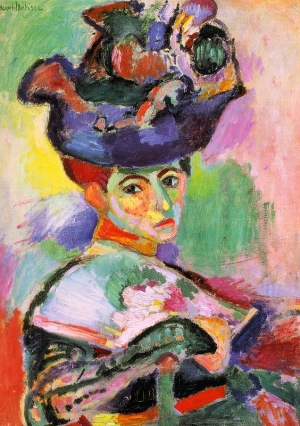
What nerve they had!
Barely out of their 20s, Gertrude Stein and her brother Leo, expatriate Americans who had grown up in Oakland, began buying work by several of the most radical artists then working in Paris. Their older brother Michael and his wife, Sarah, soon followed their example, no less daringly.
"The Steins Collect: Matisse, Picasso and the Parisian Avant-Garde," which opens today at the San Francisco Museum of Modern Art, breathtakingly unfolds the record of the family's taste in early 20th century modernism.
The show's wealth of documentary material includes the catalog of the 1970-71 exhibition "Four Americans in Paris: The Collections of Gertrude Stein and Her Family," forerunner of the present project and a rudimentary template for it.
The Museum of Modern Art in New York organized "Four Americans" - and sent a version of the show to the San Francisco Museum of Art, as SFMOMA called itself then - shortly after acquiring several works from Gertrude's estate after the 1967 death of her companion of 36 years, Alice B. Toklas. Visitors to SFMOMA who happened to see "Four Americans" in New York will remember a grand experience, but "The Steins Collect" expands all of its dimensions, like a mansion built around a cottage.
Picasso and Matisse tower over everyone else here, but outstanding works by others do crop up.
The first room, dedicated to Leo's self-education as a collector, includes Cézanne's "Five Apples" (1877-78), in whose tiny dimensions his concentration feels explosively compressed. In a later room, which dramatizes the divergence of Gertrude's taste from Leo's, Juan Gris' "Flowers" (1914) proves that Picasso's Cubism had in it implicit graces unexploited even by him.
Mural-scale enlargements of historical photos in several rooms show us paintings in the exhibition as the Steins lived with them. The example most striking to me: a shot of Gertrude's atelier at 27 Rue de Fleurus showing a row of small proto-Cubist Picasso female heads. Several of them hang here, foreshadowing, as grimaces do a sneeze, the epochal novelty of his 1908 "Demoiselles d'Avignon." That picture's ringing absence from the exhibition raises again the question why Gertrude did not buy it when no one else would.
"The Steins Collect" tells the complicated story of Leo taking the lead as a bohemian in Paris, of Gertrude joining him, and their collecting taste evolving in tandem until a breach occurred over Picasso's breakthrough into Cubism.
Meanwhile, Michael and Sarah Stein, who relocated from France to Palo Alto in 1935, championed Matisse above all his contemporaries. They influenced several American friends abroad and in the Bay Area to acquire pieces by Matisse, leading to major gifts and bequests of the artist's work to SFMOMA, including his painted portraits of Michael and Sarah.
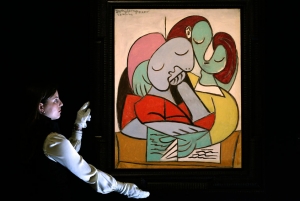
Sotheby's kicked off a two-week series of major art auctions in New York on Tuesday by selling Pablo Picasso's rainbow-hued double portrait, "Women Reading," for $21.3 million.
In this 1934 painting, Picasso's mistress, Marie-Thérèse Walter, and her sister, Genevieve, hover over an open book, their faces painted in cheery shades of sky blue and mint green. Sotheby's expected the painting to sell for between $25 million and $35 million, but only two bidders joined in the competition and the dogfight was short.
The winner was a Chinese man who wore blue jeans and cradled a cell phone to his ear as he bid from his seat in the house's Manhattan salesroom. Afterward, he declined to give his name.
Sotheby's tried to leverage Picasso's global appeal by packing its $170.4 million sale with pieces spanning the artist's seven-decade career, from early Picasso portraits of rosy-cheeked children to late-era nudes. The strategy largely worked: Eight of the sale's 10 Picassos found buyers, including a 1970 portrait, "Couple with a Guitar," that came from the estate of San Francisco collector Dodie Rosekrans and sold to a Russian telephone bidder for $9.6 million, just below its $10 million low estimate. Picasso's 1930 view of his first wife, Olga, "Woman," also sold to a telephone bidder for $7.9 million, over its $5 million high estimate.
But the mood in the packed salesroom felt fickle off and on, with 15 of the sale's 59 works going unsold—a sign that seasoned buyers crave masterpieces and are willing to bypass anything deemed ho-hum.
Paul Gauguin's "Young Tahitian," a nine-inch-tall wooden bust sculpted during the artist's first trip to Tahiti around 1893, sold following a single bid for $11.2 million, over its $10 million low estimate. Gauguin, who rarely made sculptures, adorned this tamanu-wood carving of a child with several red-coral and shell necklaces. In an endearing twist, he also gave the work to the daughter of his friend and art critic Jean Dolent.
Expressionist Alexej von Jawlensky's vivid portrait his wife from 1912, "Woman with a Green Fan," sold for $11.2 million, within its $8 million to $12 million estimate. Paul Delvaux's surrealist view of two lounging women from 1946, "Caryatids," sold for $9 million, well over its $5 million high estimate.
Picasso was very, very good for the Seattle Art Museum and King County.
The museum says a study it commissioned has concluded the Picasso show, which ran from Oct. 8, 2010, to Jan. 17, had an economic impact of $66 million, including $58 million in King County.
The show, Picasso: Masterpieces from the Musée National Picasso, Paris, was the most successful in the history of the museum. It drew 405,000 visitors and pushed SAM membership to a record of more than 48,000 households.
The show came at a critical time for the museum, whose finances were in fragile shape and hoped that Picasso would change that.
The study, by William Beyers, a geography professor at the University of Washington, estimated that people who saw the Picasso show spent $22.7 million in King County on lodging, food, transportation and other items.
The donor flew to Australia from the US last year to personally hand over the painting, "Jeune fille endormie", which is one of the largest gifts ever made to the University of Sydney.
The vivid painting, which measures 18 inches tall by 22 inches wide, was painted in 1935 and depicts Picasso's lover and muse, Marie-Therese Walter. It has only been shown once in public before now.
In June, the artwork, which shows Walter asleep with her head leaning on her crossed arms, will be sold at Christie's auction house in London and is expected to fetch between £9 million and £12 million. Last year, a 1932 portrait of Walter by Picasso, "Nu au Plateau de Sculpteur" set a world record when it was snapped up by a mystery bidder for $106.5 million (£65m).
Michael Spence, Sydney University vice-chancellor, said the "extraordinary act of generosity" came with three conditions.
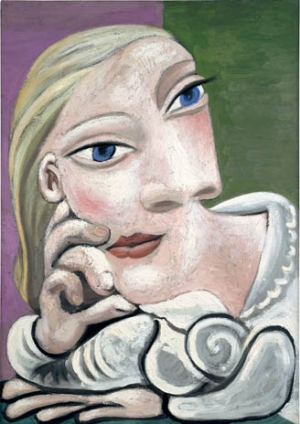
The elevator to the Manhattan apartment of Picasso biographer John Richardson opens on life- size photocopies of two paintings.
Inside the sprawling flat, the Spaniard’s intense eyes gaze from black-and-white photographs and book covers displayed amid vases of white lilies. Drawings, paintings and lithographs line the walls.
Picasso has been part of Richardson’s life for almost 60 years. With three door-stop volumes of the biography in print, Richardson is working on a fourth.
We met last week to discuss “Picasso and Marie-Therese: L’amour Fou,” an exhibition Richardson, 87, curated for Gagosian gallery in New York.
“Except for Jacqueline, his second wife, this was the longest, most-enduring love of his life,” said the patrician Richardson in a tweed jacket.
The artist was 45 and unhappily married in January 1927 when he spotted the voluptuous 17-year-old Marie-Therese Walter on a Paris street.
The creative deluge that followed is the subject of “L’amour Fou.” Its almost 90 paintings, drawings and sculptures explore love, lust and desire through Surrealism, Cubism, deft academic drawings, scenes of rapture, bulbous eyes, phallic noses and stick figures that predate Giacometti.
“Some are very tender, some are rough sex,” said Richardson, who organized the exhibition with the couple’s granddaughter, Diana Widmaier Picasso.
What was Walter’s appeal?
‘No Fool’
“She was exceedingly submissive, infinitely sustaining and no fool,” said Richardson. “She understood his need for affairs on the side and she forgave that because she knew that fundamentally he belonged to her.”
|
|
|
|
|